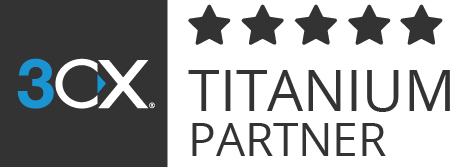From the Apple Watch to FitBit, wearables are fast becoming The Next Big Thing. They, and the Internet of Things (IoT) – that growing Web of sensor-laden consumer devices, all with online connections – may do to mobile computing what smartphones and tablets have done to desktop computers and laptops. Relegate them to a subsidiary level.
A future vision which has yet to fully emerge. But we’re getting there it seems.
The Big Picture
It’s a mixed picture, at the moment. Surveys by Brandwatch and Brilliant Noise confirm the highest sales as being in the American market, with the US accounting for some 70% of wearable units sold. The UK is second, with 7%, Canada third, with 3%, while Australia and India each make up 2% of the market.
Research conducted by Gartner, Inc., and IHS suggests that 2016 will see the worldwide market for wearable tech reaching $5 billion, with somewhere between 130 and 180 million devices bought up by 2018.
That’s a lot of tech. And with so many devices around, there’s bound to be an effect on business.
Bring Your Own…
Alessandro Porro, of Ipswitch polled a selection of business leaders in Europe, and found that over 30% of enterprises on the continent plan to introduce wearable devices at their various sites in 2015. These will be hooked up to their existing IT infrastructures, as a kind of extension to BYOD (Bring Your Own Device).
Already, the terms WYOD (or Wear Your Own Device) and BYOW (Bring Your Own Wearables) are being bandied around.
BYOD policies and their associated documents will have to be tweaked to accommodate the nuances of wearable tech. And the added influx of connected hardware will have an impact on more than just policy.
Bandwidth Issues

There’s the very real possibility of wearable devices clashing with smartphones, tablets, and in-house computer systems – all competing for a finite amount of bandwidth on corporate networks. The net result would be the slowing down of critical business applications, a decrease in productivity, and general discontent.
With limited resources available, network managers will have to keep a close eye on their users. They’ll need to know how many devices each person has, and the websites or applications they wish to access with them. Access rights will need to be parcelled out on a stricter basis – job or mission-critical – and IT managers will have to be aware of those devices, applications, and users consuming the most bandwidth.
Productivity Matters
Bandwidth aside, there’s a compelling argument for allowing wearables in the workplace. Doing so can increase workers’ productivity by nearly 8.5%, according to a study conducted by the Goldsmiths group, at the University of London. Their Human Cloud at Work (HCAW) project – a joint venture with Rackspace – also concluded that wearing connected devices at work can increase job satisfaction by about 3.5%.
With Big Data analytics, and a typical employee wearing three devices and generating over 30GB of data weekly, there’s scope to gain insights that can lead to better on-the-job performance, increased efficiency, and healthier working conditions.
Paradoxically, smaller-sized businesses are better positioned to reap the benefits of this new technology than their larger competitors. That’s because smaller companies have greater leeway to experiment, and find ways to make wearables a part of their culture and infrastructure.
Security Matters, Too

In terms of security, wearable technology is largely uncharted territory – and a potential source of fresh opportunities for hackers.
Things like personal health monitors record and transmit sensitive information about their wearers over what are essentially open channels. Prime targets for unscrupulous players looking to sell data on to marketers, for example. Or to assist in constructing profiles for identity theft.
As the technology develops then, so too must the methods and tools needed to secure it.
Evolving Analytics and Infrastructure
Big Data analytics will need to evolve if useful insights are to be gained from the information generated by wearable devices. A given sensor or device might use different protocols if the wearer is running, or at rest, for example. So the data must be considered in its proper context.
The requirement for real-time responses to data (such as might be generated on a retail floor, as a sales rep deals with customers) will make automated solutions a necessity. This will have an effect on methods of data transmission, storage, and handling.
Business: Opportunities
The ability to capture insightful data at points of sale or service (think IoT lapel badges, for sales staff, and the like) while actively engaging with customers will bring customer services to new levels. Discreet wearable devices can offer a less formal aspect than a laptop or tablet.
For businesses themselves, wearables may provide a means of gathering data about their own staff, without impinging on their daily routines. Data may be analysed and the results used for performance assessment, training, and strategic planning.
A Strategy for Adoption
- Set Your Parameters: Consider the workings of your organisation, and the products and services you provide. Decide how wearables could best assist in achieving your goals, and which methods of service delivery would be most appropriate.
- Test the Equipment: It may take a while to find the ideal mix of gadgets to deliver on your desired goals. Start small, and build the systems up in stages.
- Make it Easy on the Customer: This means intuitive, easy to use interfaces at points of contact – and discreet methods of information gathering.
- Be Transparent: This is especially true, when using wearables to monitor and assess your employees. You don’t want them to feel you’re spying on them. So, tell them up front that you will be gathering data, what data you’ll be collecting, and how that information will be used. Then, put it in writing, so they and you can sign off on the scheme, and everyone has legal protection.
And, do it now.
Be prepared, so you don’t miss out on this growing trend.

